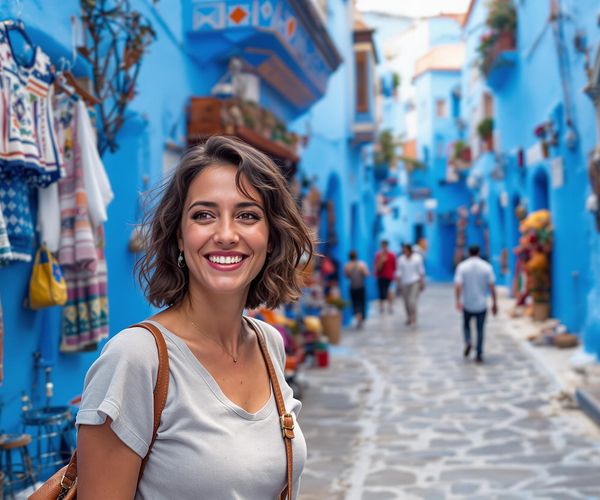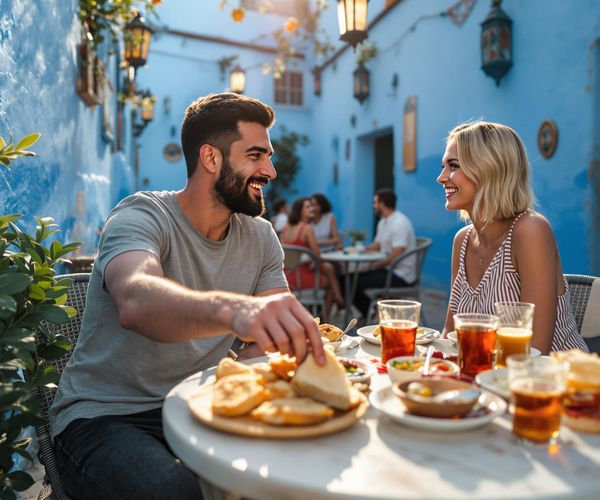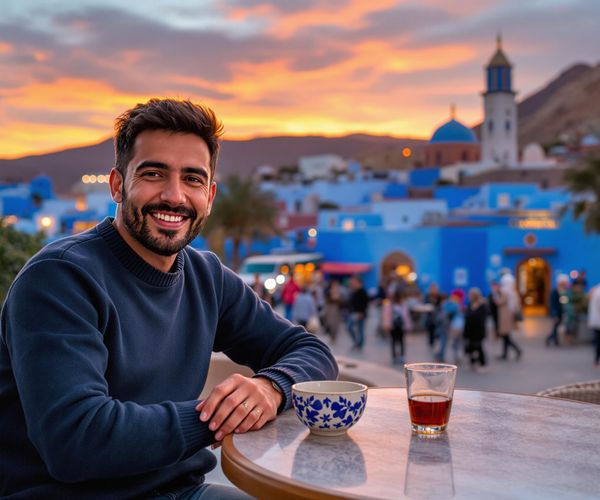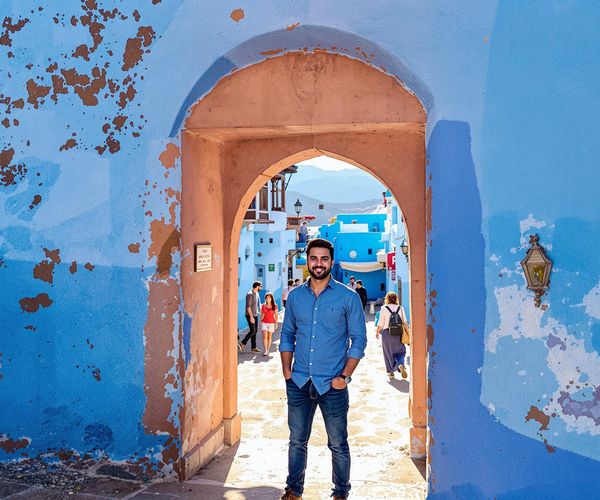
The Blue Pearl of Morocco: Chefchaouen
Discover the enchanting blue city of Chefchaouen in Morocco, where serene landscapes and rich culture blend to create an unforgettable travel experience.
Nestled in the Rif Mountains, Chefchaouen is a serene and picturesque city known for its blue-washed buildings and narrow, winding alleys. Founded in 1471, this charming town offers a unique blend of Moroccan and Andalusian cultures, making it a must-visit destination for travelers seeking an authentic and tranquil experience. The striking blue hues that adorn the city are said to symbolize the sky and heaven, creating a calming atmosphere that contrasts beautifully with the surrounding green mountains. Stroll through the medina, where you can explore local markets filled with vibrant textiles, handmade crafts, and traditional Moroccan cuisine. Don't miss a visit to the Kasbah, a restored fortress that offers panoramic views of the city and the mountains. Nature lovers will find plenty of opportunities for outdoor activities in Chefchaouen. The nearby Talassemtane National Park is perfect for hiking, with trails that lead to stunning waterfalls and breathtaking landscapes. For those interested in history and culture, the city's small but informative museums provide insight into the rich heritage of the region. Whether you're seeking relaxation or adventure, Chefchaouen promises a memorable and enchanting experience.
Local tips in Chefchaouen
- Wear comfortable shoes: The cobblestone streets and steep alleys can be challenging to navigate.
- Visit early in the morning or late in the afternoon to avoid crowds and enjoy the best light for photography.
- Try the local goat cheese, a specialty of the region that pairs well with fresh bread.
- Respect local customs: Dress modestly and ask for permission before taking photos of people.
- Carry cash: Many small shops and eateries do not accept credit cards.
- Stay hydrated: The climate can be quite warm, especially during the summer months.
The Blue Pearl of Morocco: Chefchaouen
Nestled in the Rif Mountains, Chefchaouen is a serene and picturesque city known for its blue-washed buildings and narrow, winding alleys. Founded in 1471, this charming town offers a unique blend of Moroccan and Andalusian cultures, making it a must-visit destination for travelers seeking an authentic and tranquil experience. The striking blue hues that adorn the city are said to symbolize the sky and heaven, creating a calming atmosphere that contrasts beautifully with the surrounding green mountains. Stroll through the medina, where you can explore local markets filled with vibrant textiles, handmade crafts, and traditional Moroccan cuisine. Don't miss a visit to the Kasbah, a restored fortress that offers panoramic views of the city and the mountains. Nature lovers will find plenty of opportunities for outdoor activities in Chefchaouen. The nearby Talassemtane National Park is perfect for hiking, with trails that lead to stunning waterfalls and breathtaking landscapes. For those interested in history and culture, the city's small but informative museums provide insight into the rich heritage of the region. Whether you're seeking relaxation or adventure, Chefchaouen promises a memorable and enchanting experience.
When is the best time to go to Chefchaouen?
Iconic landmarks you can’t miss
Waterfalls Akchour
Explore the breathtaking beauty of the Waterfalls of Akchour, a hidden gem in Morocco's Rif Mountains, perfect for adventure and relaxation.
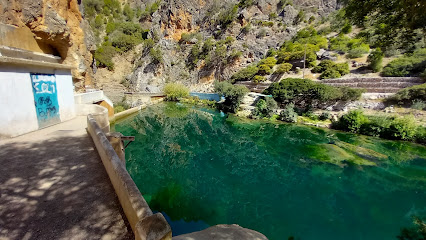
Kasbah
Discover the enchanting Kasbah of Chefchaouen, a historical landmark offering stunning views, rich culture, and vibrant blue streets in Morocco.
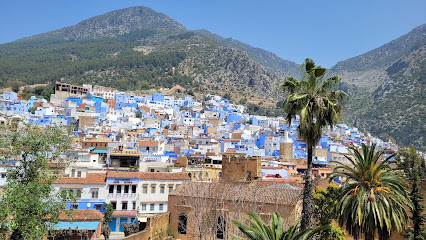
Chefchaouen Medina
Explore the captivating Chefchaouen Medina, a historical landmark with stunning blue architecture, rich culture, and breathtaking mountain views.
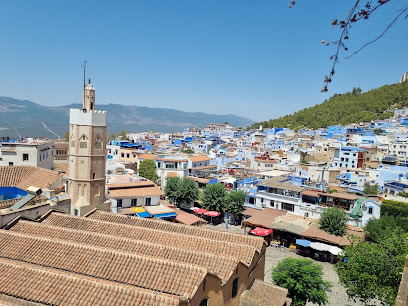
Bouzafer Mosque
Discover the serene beauty and architectural splendor of Bouzafer Mosque in Chefchaouen, a captivating destination rich in Moroccan heritage.
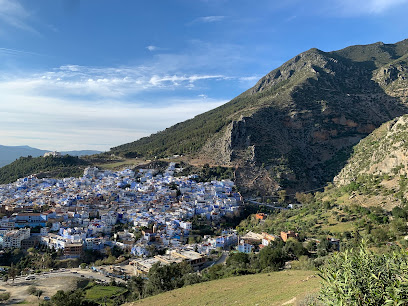
Dar Echchaouen Maison d'hôtes & Riad
Experience the magic of Chefchaouen at Dar Echchaouen, where traditional Moroccan hospitality meets serene comfort amidst stunning blue streets.
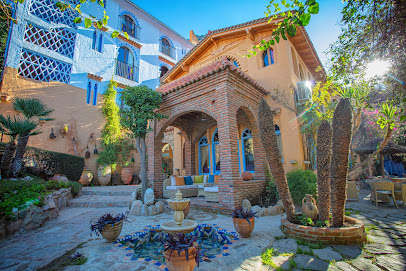
Grande Cascade D'akchour
Experience the breathtaking beauty of Grande Cascade D'akchour, a serene nature preserve in Chefchaouen, perfect for adventure and relaxation.
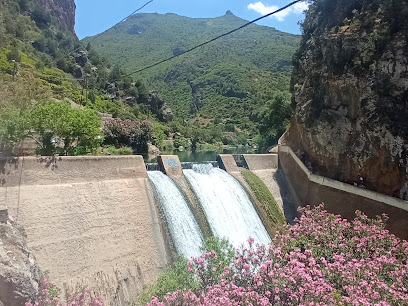
Puerta Azul
Discover the serene charm of Puerta Azul in Chefchaouen, where Moroccan hospitality meets breathtaking landscapes in a unique travel experience.

Lina Ryad & Spa
Experience the enchanting beauty of Chefchaouen at Lina Ryad & Spa, where luxury meets Moroccan tradition in a breathtaking setting.
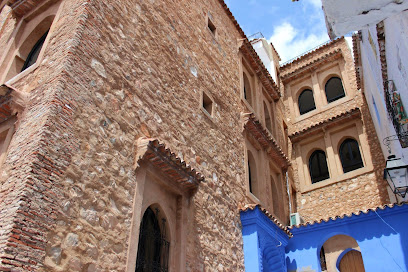
Ras El Ma
Discover Ras El Ma, a serene watering hole in Chefchaouen, where nature's beauty and local culture blend seamlessly.
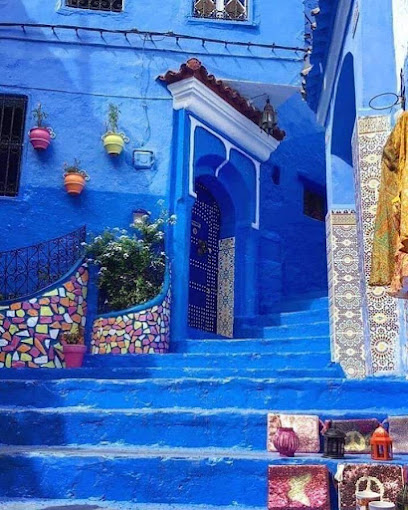
Place El Haouta
Explore Place El Haouta: A vibrant square in Chefchaouen, rich in culture, stunning views, and local artisan crafts.

Bab El Ain
Explore the rich history and stunning architecture of Bab El Ain, a must-see landmark in the heart of Chefchaouen, Morocco.

Plaza Mohammed V
Discover the tranquil Plaza Mohammed V in Chefchaouen, a picturesque park perfect for relaxation and cultural immersion amidst stunning scenery.
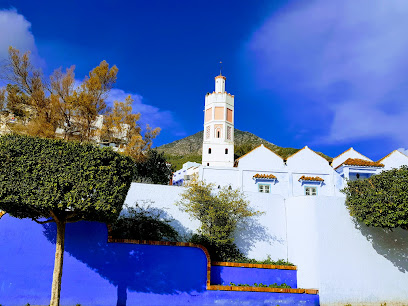
Plaza Uta el Hamman
Experience the vibrant charm of Plaza Uta el Hamman, the heart of Chefchaouen, where culture, cuisine, and stunning blue hues come together.
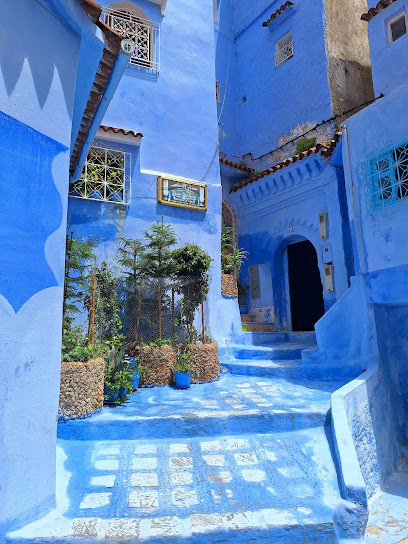
Dar Meziana
Immerse yourself in the enchanting blue streets of Chefchaouen at Dar Meziana, a serene spot for culture, cuisine, and breathtaking views.
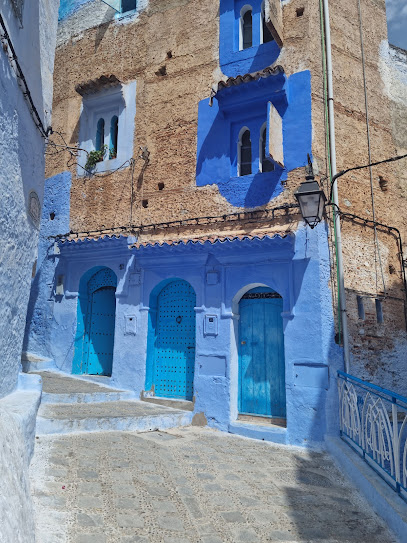
Dar Antonio Chefchaouen
Experience the enchanting charm of Chefchaouen at Dar Antonio, a cozy guesthouse blending traditional Moroccan hospitality with modern comforts.
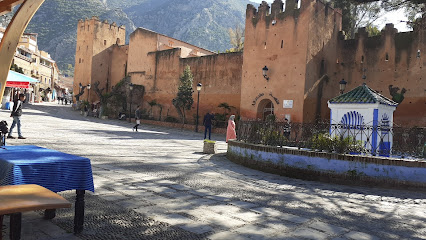
Unmissable attractions to see
Waterfalls Akchour
Experience the natural beauty of Waterfalls Akchour, a breathtaking oasis in Morocco, perfect for hiking and relaxation amidst stunning landscapes.
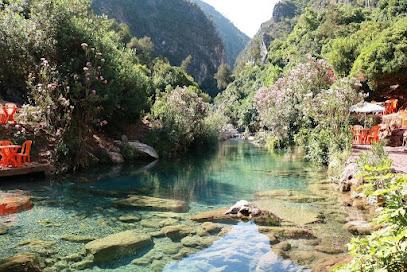
Ras El Ma
Experience the tranquil beauty of Ras El Ma, a hidden gem near Chefchaouen, featuring stunning waterfalls and lush landscapes for a perfect escape.

Kasbah
Explore the stunning Kasbah in Chefchaouen, a historical landmark with captivating architecture and breathtaking views of the Rif Mountains.
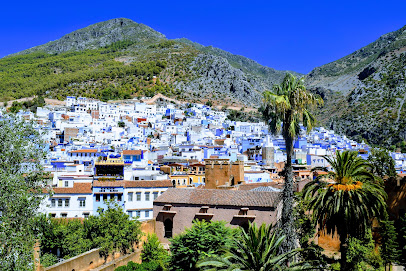
Place Moulay El Mehdi
Explore Tetouan's cultural heart at Place Moulay El Mehdi, where vibrant cafes and rich history converge in a picturesque setting.
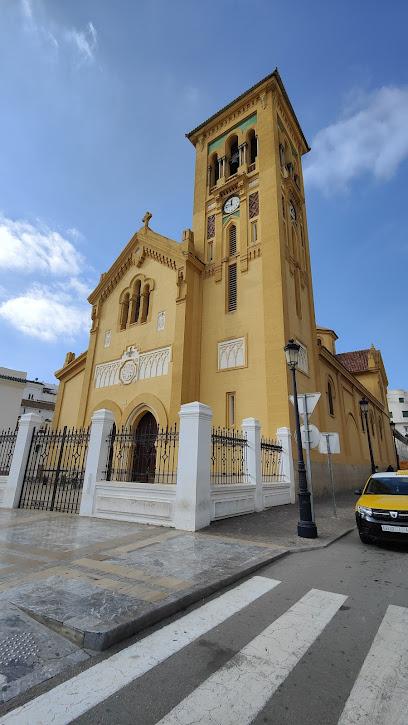
Feddan Park
Explore Feddan Park, Tetouan's serene green escape, perfect for relaxation, cultural events, and enjoying nature's beauty in the heart of the city.
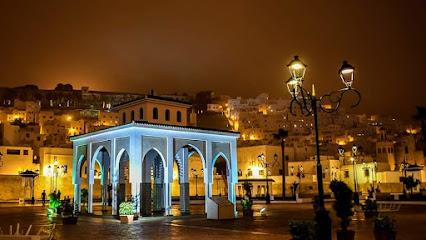
Place El Haouta
Explore the breathtaking blue streets of Chefchaouen, a hidden gem in Morocco, where vibrant culture and stunning landscapes await every traveler.
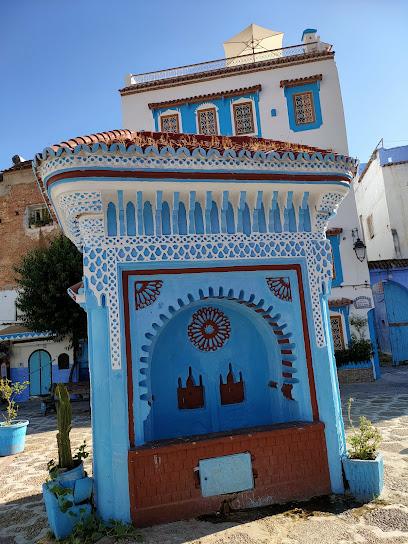
Tetuan Modern Art Center
Discover the vibrant contemporary art scene at the Tetuan Modern Art Center, a cultural gem in Tetouan, Morocco, showcasing local talent and creativity.
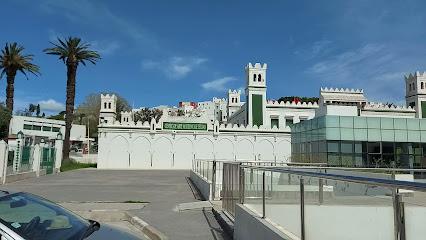
Bab El Ain
Discover the historical essence of Chefchaouen at Bab El Ain, a stunning gateway showcasing the city's vibrant culture and rich heritage.
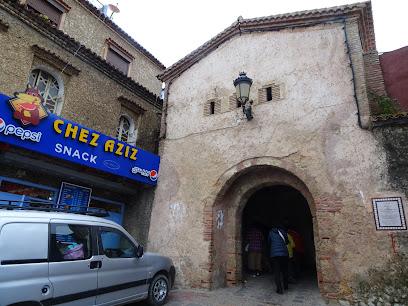
Archeological Museum
Explore Tetouan's rich archaeological heritage at the Archeological Museum, showcasing artifacts from ancient civilizations and vibrant local culture.
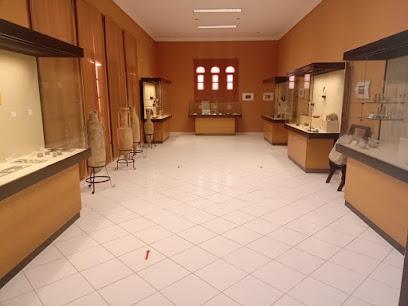
Plaza Uta el Hamman
Experience the vibrant heart of Chefchaouen at Plaza Uta el Hamman, where culture, art, and breathtaking views come together in Morocco's stunning blue city.
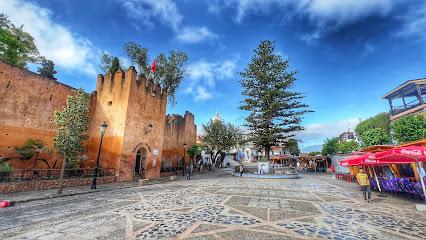
Park Sidi Abdelhamid
Discover the serene beauty of Park Sidi Abdelhamid in Chefchaouen, a tranquil park surrounded by vibrant nature and rich local culture.
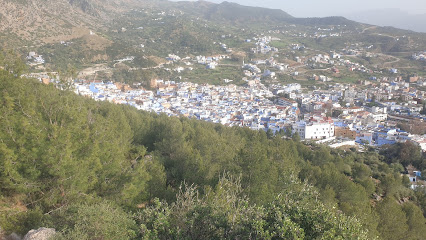
Khandak Semmar
Explore Khandak Semmar in Chefchaouen, a serene park offering lush landscapes and stunning mountain views, perfect for relaxation and family outings.
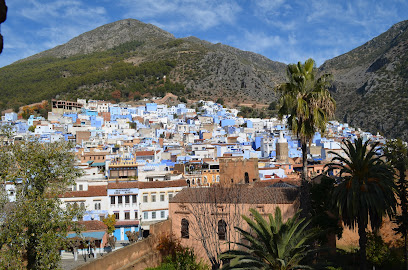
Derb El Assri
Explore the stunning blue streets of Derb El Assri, Chefchaouen – a vibrant blend of culture, art, and breathtaking views in Morocco.

Lavadero de la ciudad
Discover the historical Lavadero de la Ciudad, Chefchaouen’s traditional washhouse, a serene spot reflecting local culture and vibrant blue architecture.
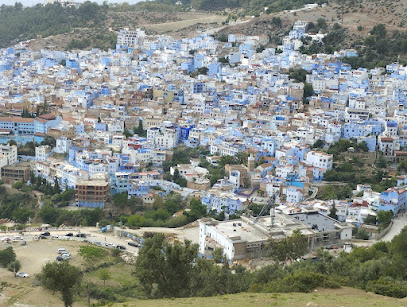
Tetuan Tannery
Experience the vibrant colors and craftsmanship at the Tetouan Tannery, a key highlight of Morocco's rich leather-making heritage.
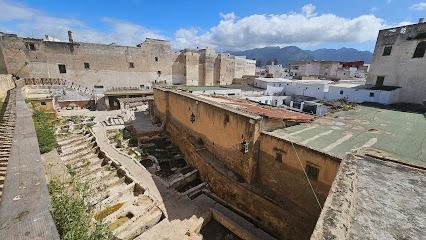
Essential places to dine
Cafe Clock
Discover the rich culinary heritage of Morocco at Cafe Clock in Chefchaouen - where every meal tells a story.
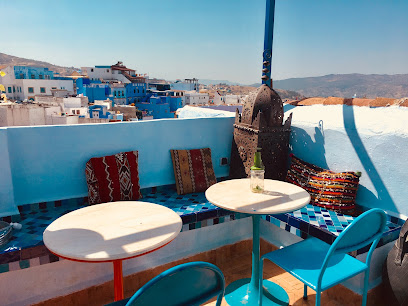
Restaurant Bab Ssour
Experience authentic Moroccan cuisine at Restaurant Bab Ssour in Chefchaouen - where every bite tells a story.
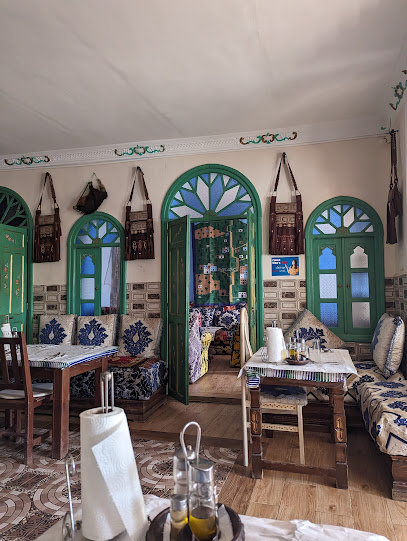
Assaada
Experience authentic Moroccan cuisine at Assaada in Chefchaouen - a must-visit dining destination for travelers seeking local flavors.

Chez Aziz
Experience the fusion of traditional Moroccan cuisine and international flavors at Chez Aziz in Chefchaouen.
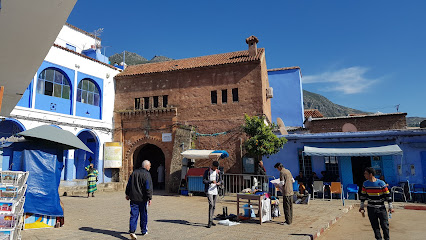
Restaurant Morisco
Discover flavorful Moroccan and Italian dishes at Restaurant Morisco in Chefchaouen - where culinary traditions meet affordability.
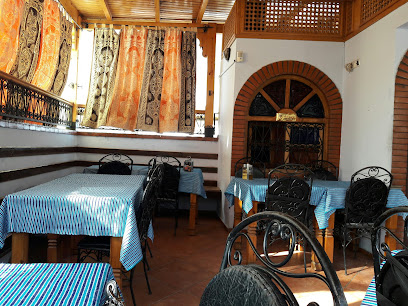
Sofia
Explore Chefchaouen: A Moroccan gem known for its stunning blue streets and authentic culinary experiences.
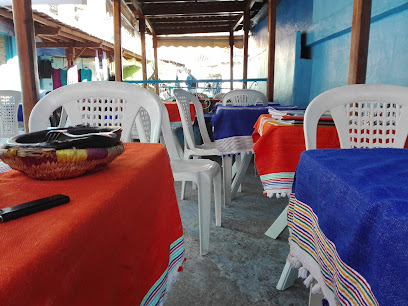
Chez Hicham
Discover Chefchaouen's culinary gem: Chez Hicham - A blend of traditional Moroccan flavors and warm hospitality.
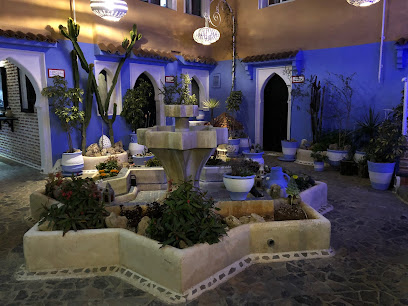
Mandala
Experience unique pizza flavors in Chefchaouen's enchanting atmosphere at Mandala – where Moroccan tradition meets culinary creativity.
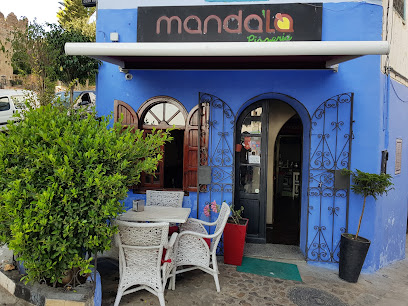
Restaurant Triana
Experience authentic Moroccan cuisine at Restaurant Triana in Chefchaouen – where tradition meets flavor in a picturesque setting.
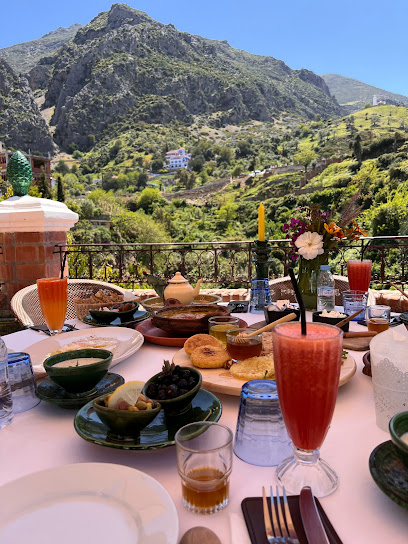
BILMOS
Experience authentic Moroccan flavors at Bilmos in Chefchaouen's vibrant heart - a culinary journey you won't forget!
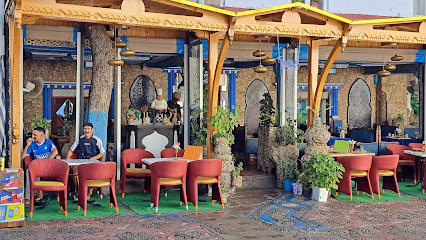
Bar Oum Rabie
Discover Bar Oum Rabie in Chefchaouen: where exquisite grilled dishes meet a diverse wine selection for an unforgettable dining experience.
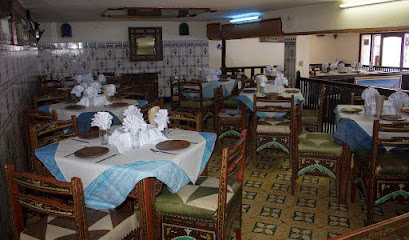
Restaurant Lalla Messaouda
Experience authentic Moroccan flavors at Restaurant Lalla Messaouda in Chefchaouen – where every meal tells a story.
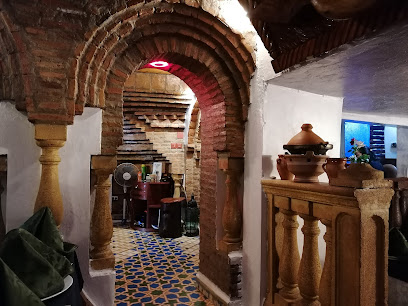
Café Restaurant Marisco Twins
Experience authentic Moroccan cuisine with a modern twist at Café Restaurant Marisco Twins in Chefchaouen's enchanting atmosphere.
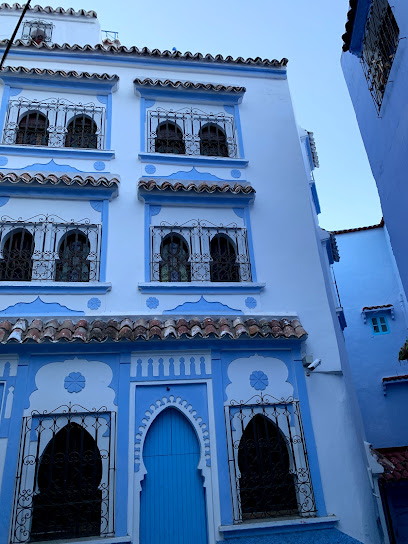
Galitos
Experience authentic Moroccan flavors at Galitos in Chefchaouen – where every dish tells a story.
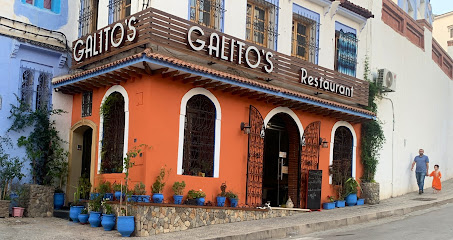
The Magic Lamp House of Aladin
Experience the magic of Moroccan cuisine blended with delightful chocolate creations at The Magic Lamp House of Aladin in Targha.
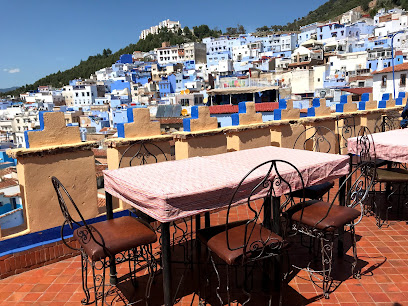
Markets, malls and hidden boutiques
La Botica De La Abuela De Aladdin
Immerse yourself in the vibrant aromas and organic treasures at La Botica De La Abuela De Aladdin in Chefchaouen, a true Moroccan gem.
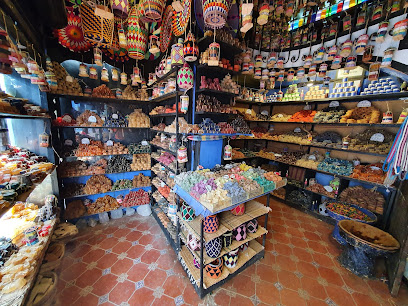
B & H Art Shop
Explore the vibrant B & H Art Shop in Chefchaouen, where Moroccan culture and fashion come together in stunning handmade garments.
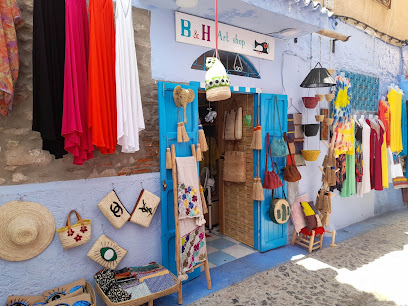
Hamid Shop
Explore the Authentic Flavors of Morocco at Hamid Shop in Chefchaouen - A Local Grocery Store Experience.
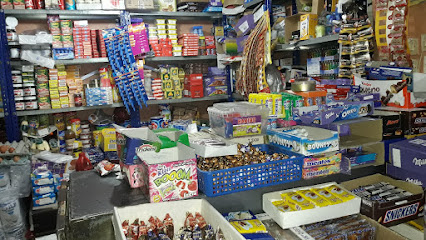
Rugs, Blankets Hand Weaver's Cooperative, L'Art de l'Artisanat berbère
Explore L'Art de l'Artisanat in Chefchaouen for exquisite handwoven Berber rugs and blankets, celebrating authentic Moroccan craftsmanship.
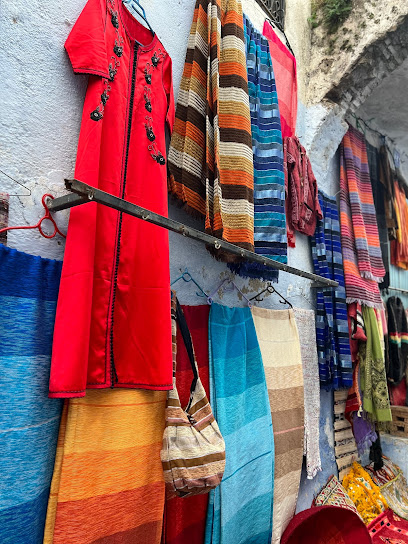
Jabir shop chefchaouen
Explore Jabir Shop in Chefchaouen for unique Moroccan gifts and souvenirs that embody the spirit of the blue city.
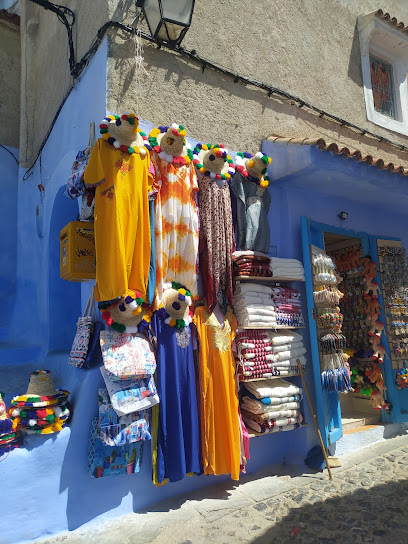
Blue. concept store
Explore the vibrant culture of Chefchaouen at Blue. Concept Store, your go-to destination for unique Moroccan gifts and artisanal treasures.
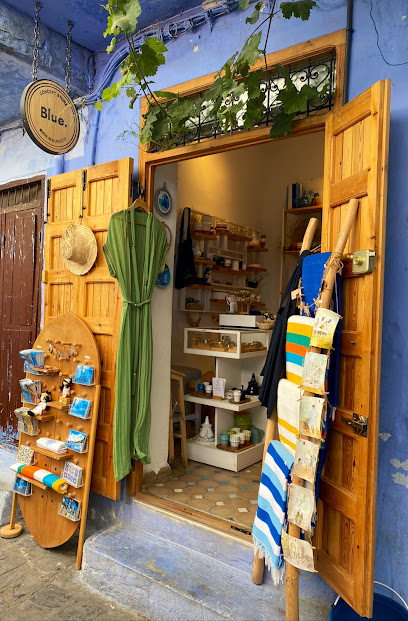
Boutique EL-ASRI
Explore Boutique EL-ASRI in Chefchaouen for exclusive men's fashion blending tradition and modern style in a stunning Moroccan setting.
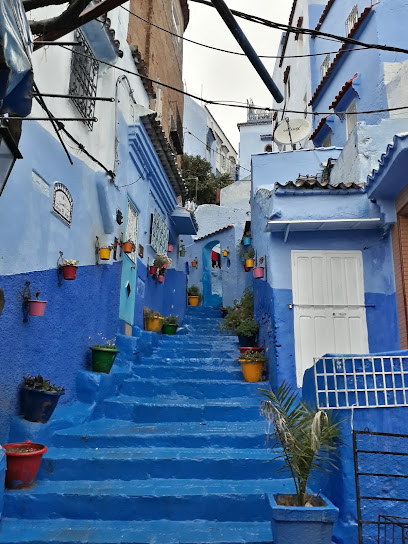
Mrini's
Explore Mrini's in Chefchaouen for authentic Moroccan crafts and a glimpse into local artistry amidst stunning blue streets.

Hibart Souvenirs Shop
Discover unique Moroccan souvenirs at Hibart Souvenirs Shop, a charming destination in Chefchaouen for travelers seeking authentic local crafts.
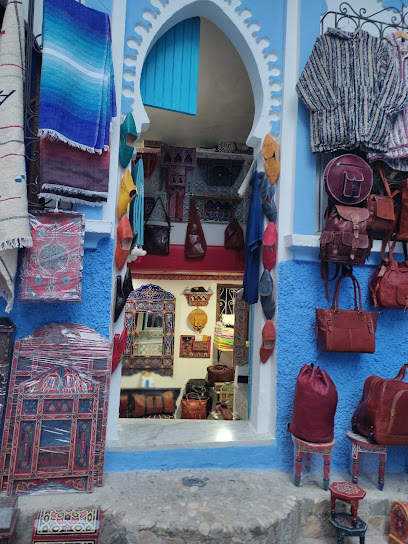
Jordan jewels
Explore the enchanting world of handcrafted jewelry and unique souvenirs at Jordan Jewels in Chefchaouen, Morocco, where artistry meets tradition.
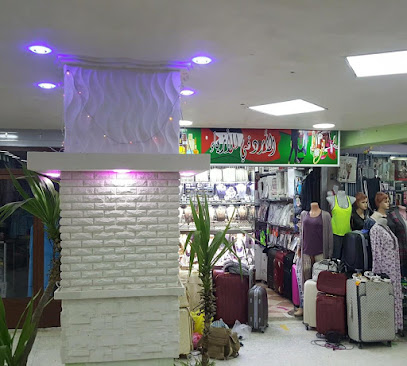
KaikalanaCrafts
Explore the vibrant world of Moroccan craftsmanship at KaikalanaCrafts in Chefchaouen, where each piece tells a unique story of artistry and tradition.
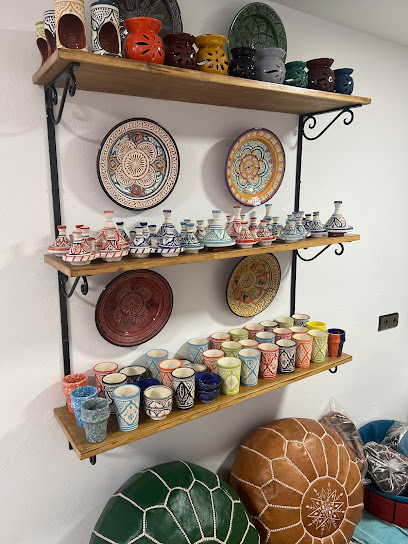
Magasin de Rafik
Explore local craftsmanship at Magasin de Rafik in Chefchaouen, where vibrant Moroccan culture meets unique shopping opportunities.
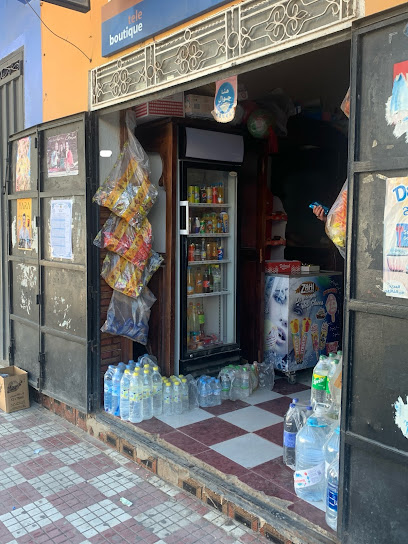
Aboor Art and Ceramics
Discover the vibrant artistry of Moroccan craftsmanship at Aboor Art and Ceramics in Chefchaouen, where each piece tells a unique story.
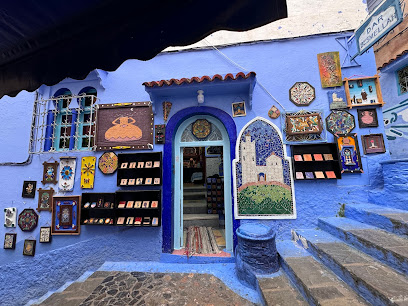
Chefchaouen crafts
Explore the vibrant artisan gift shop in Chefchaouen, featuring unique handmade crafts that reflect the rich Moroccan culture.
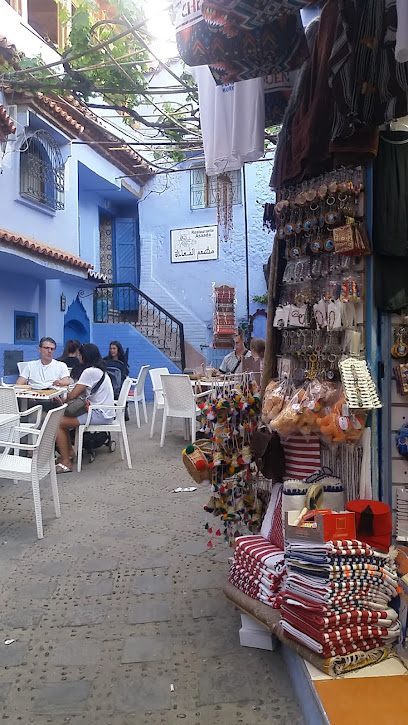
sanae shop
Explore the vibrant world of Moroccan fashion at Sanae Shop in Chefchaouen, where tradition meets contemporary style in a charming setting.
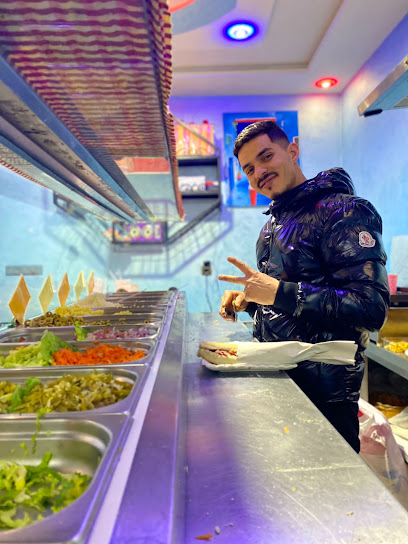
Essential bars & hidden hideouts
Cafe Clock
Experience the essence of Moroccan cuisine at Cafe Clock, where tradition meets innovation in the heart of Chefchaouen.

Assaada
Discover the authentic flavors of Morocco at Assaada, a delightful restaurant in the heart of Chefchaouen.
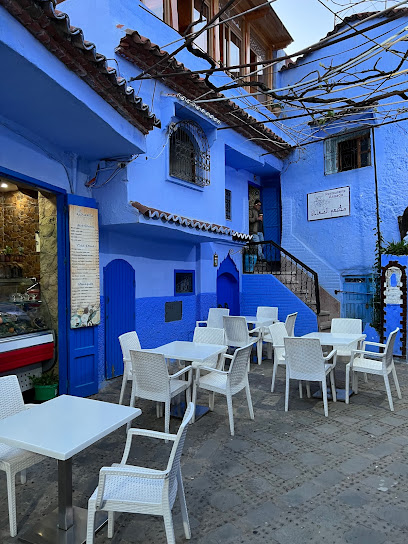
Restaurant Morisco
Experience the vibrant flavors of Moroccan cuisine at Restaurant Morisco in Chefchaouen, where traditional dishes meet international delights.
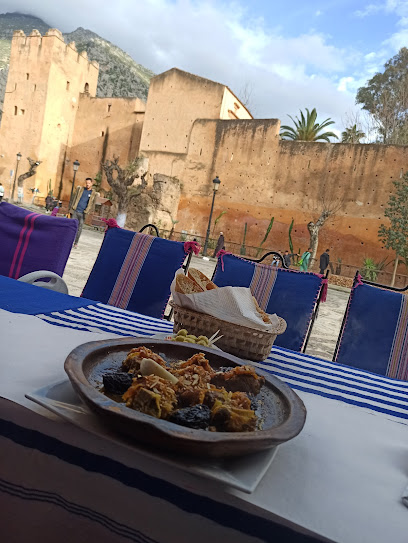
Mandala
Experience the best pizza in Chefchaouen at Mandala, where local flavors meet Italian tradition in a cozy atmosphere.
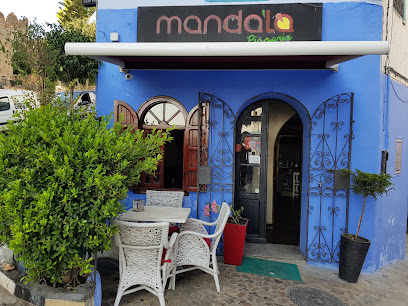
BILMOS
Experience authentic Moroccan cuisine at BILMOS in Chefchaouen, where traditional flavors meet a vibrant atmosphere.
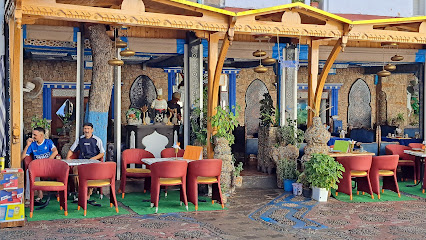
Bar Oum Rabie
Experience the flavors of Morocco at Bar Oum Rabie, a charming grill and wine bar in the heart of Chefchaouen.
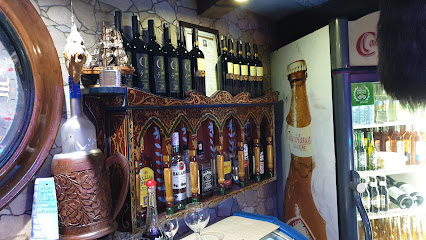
Café Restaurant Marisco Twins
Savor the best of Moroccan and health-conscious cuisine at Café Restaurant Marisco Twins, a culinary delight in the picturesque Chefchaouen.
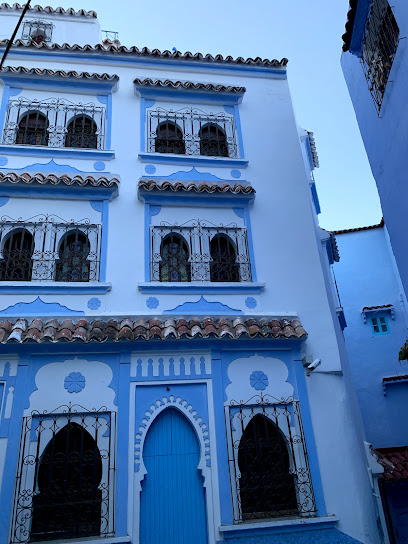
Galitos
Experience the authentic taste of Moroccan cuisine at Galitos, a hidden gem in the heart of Chefchaouen, perfect for food lovers and travelers alike.
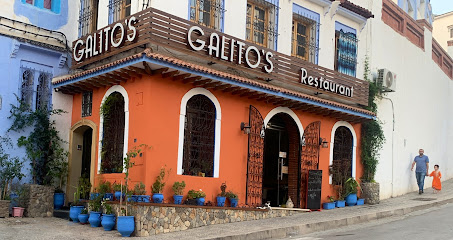
Toda Creperie & Ice Cream
Experience the enchanting flavors of Chefchaouen at Toda Creperie & Ice Cream, where every bite is a sweet escape into Moroccan culinary delights.
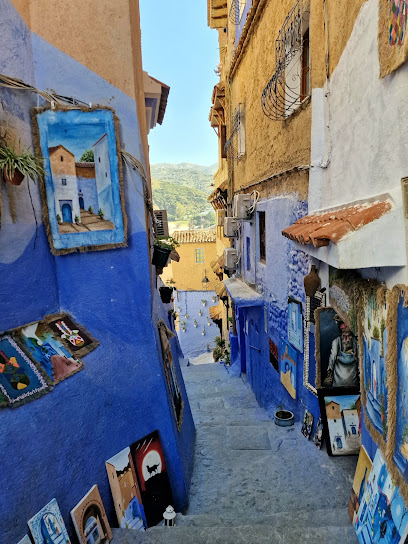
Restaurant Al Wiam
Experience authentic Moroccan flavors in a charming setting at Restaurant Al Wiam in the heart of Chefchaouen.
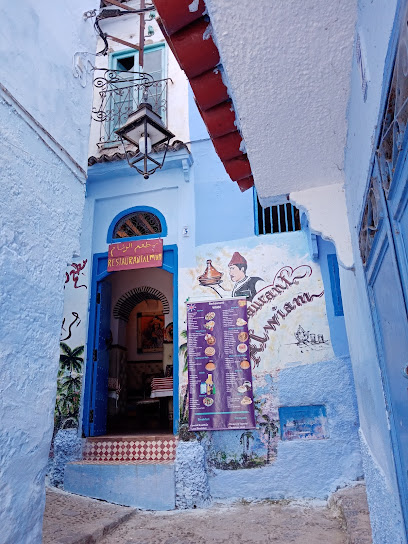
Café Sindibad
Discover authentic Moroccan cuisine at Café Sindibad in Chefchaouen, where flavors and culture blend beautifully.

Mounir Food
Explore Chefchaouen's vibrant culinary scene with Halal delights at Mounir Food, where every meal is a flavorful adventure in the heart of Morocco.
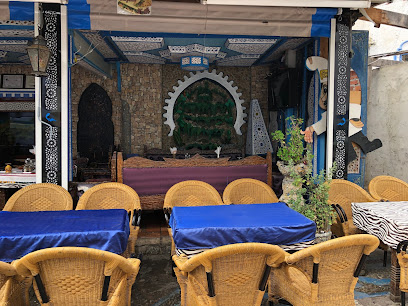
مطعم داركم
Experience the rich flavors of Moroccan cuisine at مطعم داركم in Chefchaouen, where tradition meets hospitality in a vibrant setting.
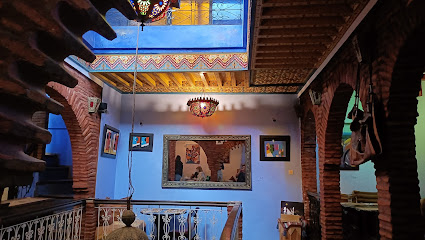
Café & restaurant Meftah
Discover the authentic taste of Morocco at Café & Restaurant Meftah, a culinary haven in the heart of Chefchaouen.
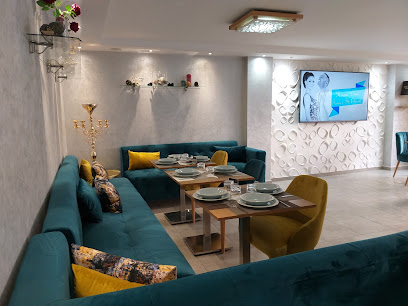
Café Mundial
Experience the essence of Chefchaouen at Café Mundial, where delightful coffee meets a vibrant social scene in the heart of the blue city.
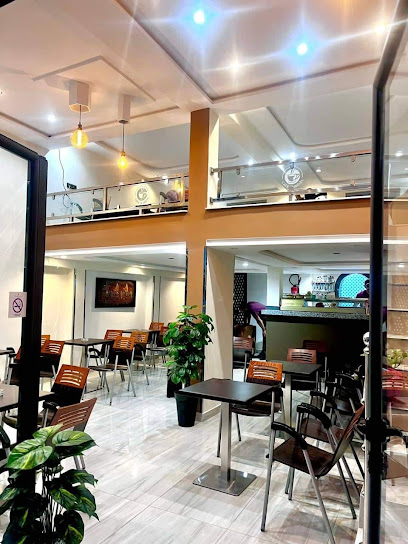
Travel experiences inspired by this city
Explore more travel diariesLocal Phrases
-
- Helloسلام
[salaam] - Goodbyeوداعا
[wadaeana] - Yesنعم
[naam] - Noلا
[laa] - Please/You're welcomeمن فضلك
[min fadlik] - Thank youشكرا
[shukran] - Excuse me/Sorryعفوا
[afwan] - How are you?كيف حالك؟
[kayfa halak?] - Fine. And you?بخير. وأنت؟
[bikhayr. wa anta?] - Do you speak English?هل تتحدث الإنجليزية؟
[hal tatahadath al ingiliyziya?] - I don't understandأنا لا أفهم
[ana la afham]
- Helloسلام
-
- I'd like to see the menu, pleaseأريد أن أرى القائمة، من فضلك
[urid an ara alqaimah, min fadlik] - I don't eat meatأنا لا آكل اللحم
[ana la aakol allaham] - Cheers!في صحتك!
[fi sahtik!] - I would like to pay, pleaseأود أن أدفع، من فضلك
[awad an adfa, min fadlik]
- I'd like to see the menu, pleaseأريد أن أرى القائمة، من فضلك
-
- Help!النجدة!
[alnajdah!] - Go away!اذهب بعيدا!
[idhab baedan!] - Call the Police!اتصل بالشرطة!
[itassal bialshurta!] - Call a doctor!اتصل بطبيب!
[itassal bitalib!] - I'm lostلقد ضللت الطريق
[laqad dalalt altariq] - I'm illأنا مريض
[ana mareed]
- Help!النجدة!
-
- I'd like to buy...أريد أن أشتري...
[urid an ashtari...] - I'm just lookingأنا فقط أتفرج
[ana faqat atfarg] - How much is it?كم هو ثمنه؟
[kam hu thamanuh?] - That's too expensiveهذا غالي جدا
[hatha ghali jiddan] - Can you lower the price?هل يمكنك خفض السعر؟
[hal yumkinuk khafd alsaeir?]
- I'd like to buy...أريد أن أشتري...
-
- What time is it?كم الساعة؟
[kam alsaeah?] - It's one o'clockالساعة واحدة
[alsaeah wahidah] - Half past (10)الساعة والنصف
[alsaeah walnisf] - Morningالصباح
[alsabah] - Afternoonالظهر
[alduhur] - Eveningالمساء
[almasa] - Yesterdayأمس
[ams] - Todayاليوم
[alyawm] - Tomorrowغدا
[ghadan] - 1واحد
[wahid] - 2اثنين
[ithnayn] - 3ثلاثة
[thalatha] - 4أربعة
[arbaa] - 5خمسة
[khamsa] - 6ستة
[sitta] - 7سبعة
[sabaa] - 8ثمانية
[thamaneya] - 9تسعة
[tisa] - 10عشرة
[ashara]
- What time is it?كم الساعة؟
-
- Where's a/the...?أين...
[ayn...] - What's the address?ما هو العنوان؟
[ma hu al'uanan?] - Can you show me (on the map)?هل يمكنك أن تريني (على الخريطة)؟
[hal yumkinuk an tareeni (ala alkharitah)?] - When's the next (bus)?متى يأتي الحافلة التالية؟
[mata yati alhafilah altaliyah?] - A ticket (to ....)تذكرة (إلى ...)
[tadhkarah (ila ...)]
- Where's a/the...?أين...
History of Chefchaouen
-
Chefchaouen, also known as Chaouen, was founded in 1471 by Moulay Ali Ben Moussa Ben Rached El Alami, a descendant of Prophet Muhammad. Initially, it served as a small fortress to defend against Portuguese invasions in northern Morocco. The city was strategically located in the Rif Mountains, providing natural defense and a vantage point over the surrounding area.
-
In the late 15th and early 16th centuries, Chefchaouen became a haven for Muslims and Jews fleeing persecution during the Reconquista in Spain. The influx of Andalusian refugees significantly influenced the city's culture, architecture, and way of life, blending North African and Andalusian traditions.
-
In 1920, during the Rif War, Spanish forces occupied Chefchaouen. The occupation lasted until 1956 when Morocco gained independence. The Spanish influence is still evident in the city's architecture, language, and cultural life. Many buildings from this period reflect a blend of Spanish and Moroccan styles.
-
Chefchaouen is renowned for its distinctive blue-washed buildings, a tradition that started in the 1930s. The choice of blue is believed to symbolize the sky and heaven, and it has become a hallmark of the city's identity. The medina, with its narrow, winding streets, showcases traditional Moroccan and Andalusian architecture, attracting visitors from around the world.
-
Today, Chefchaouen is a vibrant city that attracts tourists with its unique charm and historical significance. The city has managed to preserve its rich cultural heritage while adapting to modern times. It is also known for its artisan crafts, including weaving and leatherwork, which continue to thrive in its bustling markets.
Chefchaouen Essentials
-
Chefchaouen is located in the Rif Mountains of northern Morocco. The nearest international airports are Tangier Ibn Battouta Airport and Tetouan Sania Ramel Airport. From Tangier, it is approximately a 2-hour drive to Chefchaouen, and from Tetouan, it takes about 1.5 hours by car. You can hire a taxi or take a bus from these cities. CTM and other local bus companies operate regular services to Chefchaouen from major Moroccan cities such as Casablanca, Rabat, and Fez.
-
Chefchaouen is a small, walkable city, especially within the medina (old town). For longer distances, taxis are available and relatively inexpensive. There are no public buses within the city, but you can use grand taxis for intercity travel. Car rentals are available, but driving in the narrow streets of the medina can be challenging. Walking is often the best way to explore the charming streets and alleys of Chefchaouen.
-
The official currency in Morocco is the Moroccan Dirham (MAD). Credit cards are accepted in some hotels, restaurants, and shops, but it is advisable to carry cash, especially in smaller establishments and markets. ATMs are available throughout Chefchaouen, but it's wise to withdraw sufficient cash before entering the medina, where ATMs might not be as accessible. Currency exchange services are also available in the city.
-
Chefchaouen is generally a safe destination for tourists. However, it is always advisable to take standard precautions. Avoid walking alone at night in unfamiliar areas and keep an eye on your belongings in crowded places like markets. Chefchaouen does not have any specific high-crime areas targeting tourists, but it is always best to stay vigilant and aware of your surroundings. Petty theft and scams can occur, so be cautious.
-
In case of emergency, dial 19 for police assistance and 15 for medical emergencies. The local police station and medical facilities are available in Chefchaouen. It is recommended to have travel insurance that covers medical emergencies. For minor health issues, there are pharmacies in the city where you can purchase over-the-counter medications. Ensure you have the contact details of your country's embassy or consulate in Morocco.
-
Fashion: Do dress modestly, especially when visiting religious sites. Avoid wearing revealing clothing. Religion: Do respect local customs and traditions. When visiting mosques and religious sites, dress conservatively and remove your shoes. Public Transport: Do be respectful and courteous to fellow passengers. Don't eat or drink on public transport. Greetings: Do greet people with 'Salam Alaikum' (Peace be upon you). Handshakes are common, but use your right hand. Eating & Drinking: Do try local delicacies and accept food offerings graciously. Don't refuse hospitality, as it is considered impolite.
-
To experience Chefchaouen like a local, visit the vibrant markets (souks) where you can buy traditional Moroccan goods such as rugs, pottery, and spices. Engage with locals, who are often friendly and willing to share stories about their culture and history. Don't miss the panoramic views from the Spanish Mosque, a short hike from the medina. For an authentic experience, try dining at local eateries serving traditional Moroccan cuisine like tagine and couscous.
Nearby Cities to Chefchaouen
-
Things To Do in Tetouan
-
Things To Do in Asilah
-
Things To Do in Tangier
-
Things To Do in Europa Point
-
Things To Do in Gorham's Cave Complex
-
Things To Do in St. Michael's Cave
-
Things To Do in Alameda Botanic Gardens
-
Things To Do in Queensway Quay Marina
-
Things To Do in Catalan Bay
-
Things To Do in Main Street
-
Things To Do in Gibraltar
-
Things To Do in Moorish Castle
-
Things To Do in Casemates Square
-
Things To Do in Fes
-
Things To Do in Meknes











